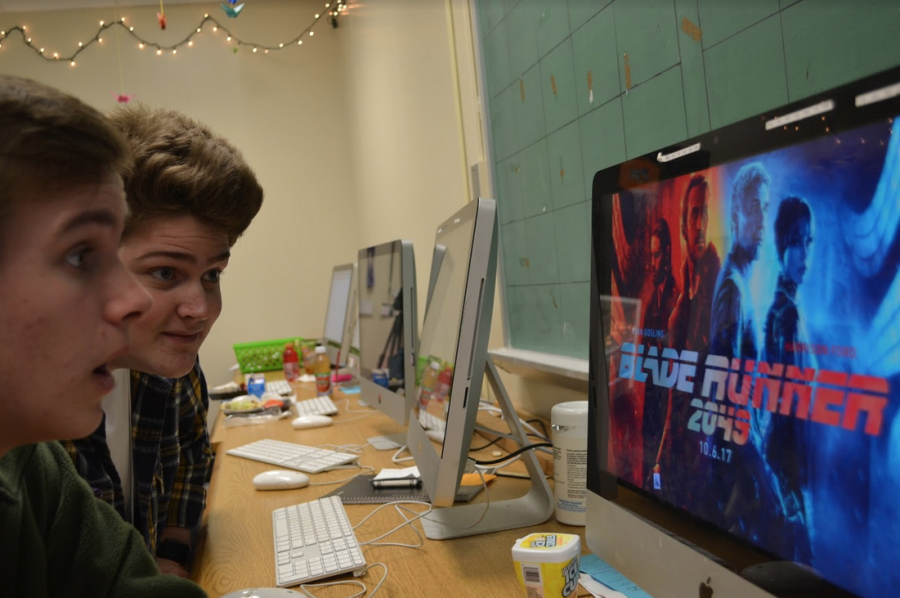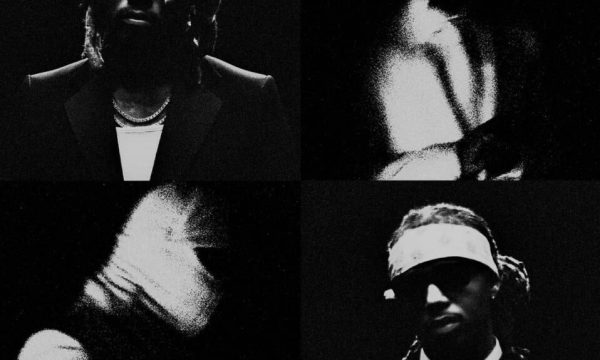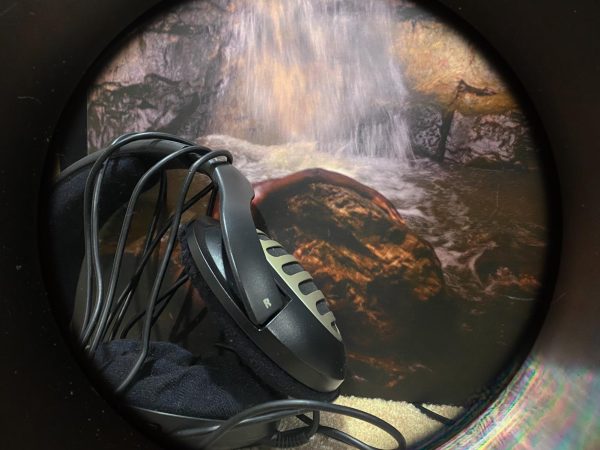2049: Paying homage to a classic
2049’s fantastic cinematography came from none other than the industry legend Roger Deakins. Deakin’s best known work includes The Shawshank Redemption and No Country For Old Men. Villeneuve and Deakins utilized color in the film to help represent the visual journey. Bright colors flow throughout the entire film, leaving those scenes with little color to stand out.
October 31, 2017
Canadian Filmmaker Denis Villeneuve brought the cinematic universe of Blade Runner back to life with the release of the long awaited sequel Blade Runner 2049. Villeneuve faced a huge challenge, as the original Blade Runner still lays claim as the greatest science fiction movie ever made by many critics, and pleasing the fans of the first installment always limits a production.
Long mood setting scenes, a fantastically eerie score, and an aesthetically grimy portrayal of the future all came together for the original Blade Runner in 1982, making it a cinematic masterpiece that forever changed the genre. The original Blade Runner manages to touch on religious themes, as humans mastered the practice of genetic engineering and characters traverse the now blurred line between God and man.
Blade Runner left a ton for 2049 to live up to, but Villeneuve managed to deliver a fantastic film which both stuck true to the original and felt like a brand new world.
In the world of 2049, humans created replicants, bioengineered workers with enhanced strength and endurance now with open-ended life spans. Blade Runners, replicants themselves, hunt replicants that escape termination. The story of 2049 explores various themes of identity and humanity with religious undertones. Blade Runner KD6.3-7, nicknamed K, brought to life by Ryan Gosling, undergoes a fantastic transition over the course of the film. Through various character building scenes, KD6.3-7 sheds his replicant skin and finds himself born again as Joe.
A common criticism of the original Blade Runner attacks the long mood setting scenes. While drawn out scenes help build dramatic tension, they can kill the pacing of a film for audience members. 2049 includes these long drawn out scenes, but they feel different from the original. More actions in the scenes help entertain the audience and feel like necessary inclusions into the film. The Blade Runner universe features hard science fiction, defined as sci-fi that does not shy away from the nuts and bolts of its science. Villeneuve utilizes this hard science fiction to alienate and immerse the audience in the world of Blade Runner and better show KD6.3-7’s transformation into Joe.
The film opens with K on a case arriving at a protein farm to terminate Sapper Morton, played by Dave Bautista. Bautista blew his role out of the water and his character leaves a lasting impact on both K and the audience. Before their gruesome fight, K and Morton discuss the limits of their nature. Morton asks how K feels about hunting down his own kind. The soulless K responds by asking why Morton’s generation of Replicants always run, which prompts Morton to respond with “because you’ve never seen a miracle.” This line haunts K for the rest of the film, and plays a big part in his transformation. Morton asks K to spare him, because Morton now solely exists as a protein farmer and poses no threat to anyone. Instead of responding, K takes out his gun, prompting a brutal back and forth fight between K and Morton. This shows how inhumane K acts; he contains no sympathy, a trademark of humanity. At the end of the scene, K finds a case of bones buried beneath a tree and recovers it for his case.
Immediately after the first scene, K returns to the Los Angeles Police Department headquarters for a baseline test to make sure that no dramatic event happened while he investigated the case that drastically changed his psychique. The baseline test scene feels grossly robotic in its nature and helps drive the point home that K exists as an Artificial Intelligence (A.I.). K and his superior Lieutenant Joshi, played by Robin Wright, examine the bones and determine they came from a replicant. However; this replicant died during childbirth. The plot of the movie revolves around uncovering the mysteries behind this replicant and what implications it may pose. If replicants can reproduce, what makes them any different than humans? K then receives orders to find the offspring and terminate it, but he shows hesitation. Morton’s words about miracles flash through K’s mind and this marks the beginning of his transformation into Joe.
K returns home and the film introduces the audience to Joi, the first real humanizing aspect of K. Joi, played by Ana De Armas, acts as K’s love interest throughout the film. Joi lacks an actual body; she is another Artificial Intelligence created by the same corporation that made K. Joi relies on a system of holographic projectors to move around their apartment until K buys her a projector he can use anywhere. Joi gives K the name Joe in a scene of intimacy, but at first he rejects it. At the beginning of the film, their relationship feels one-sided, with Joi showing more interest in K than he shows her. As the movie continues, the audience can see a change in the relationship from his perspective. Their relationship feels more genuine as the film progresses. Both actors did an amazing job acting their emotions and portraying genuine lovers.
As the case continues, K comes to the conclusion that he and the offspring replicant are one the same. His entire life, K accepted living as a replicant, now faced with a reality that defines him differently, he feels overcome with fear. K’s line earlier in the film now confounds him— he now believes he possesses a soul. Gosling’s performance feels so real, his character’s anger apparent on screen as he toils with his thoughts. Later in the film, a band of rebellious replicants reveal to K that the offspring replicates a girl, meaning he thought wrong. This even more so messes with his identity, as he already accepted the idea of being different and now cannot return to anything else.
The movie lacked a true villain, and instead opted for a crazed corporate A.I. out to serve her master. Stated to the audience in the opening prologue, the Wallace Corporation inherited the ruins of the Tyrell Corporation from the original film and now produces all replicants. The corporations of the Blade Runner Universe serve as a warning on corporatism and the dangers it poses for the future. Jared Leto plays Niander Wallace, the founder of the Wallace Corporation, and he comes across on screen as a conceited CEO radicalized by his own motives. In one of his monologues, Wallace states that he hopes to deliver humanity to the stars, which he thinks he can achieve through his replicants. He sends his personal assistant Luv, played by Sylvia Hoeks, to track down the offspring replicant, so he may study them and find the key to reproduction, which he believes will help bring his dream to life.
Hoeks does a fantastic job making her character seem obsessed with achieving her goals and pleasing her master. Luv serves as the antagonist of the film and manages to terrify every second she is on screen. In her first important solo scene, she murders a human, something replicants never do. This shows the audience that she only cares about her objectives. Luv makes an enemy out of K after she breaks his projector for Joi, wiping Joi from existence. At the dramatic climax of the movie, K drowns Luv and rescues Deckard, played by Harrison Ford. K takes Deckard to see his replicant daughter, marking the end of the transition of K to Joe. Joe acts selflessly in taking Deckard to see his daughter, something K would never do. He shows sympathy, something distinctly human.
2049 serves as a great character piece, and leaves audience members immersed in an amazingly fleshed out science fiction masterpiece. The sequel definitely lived up to the original Blade Runner, and managed to surpass it in the amount of action featured on screen and the film’s emotionally gripping narrative.
The Chant’s Grade: A+



















